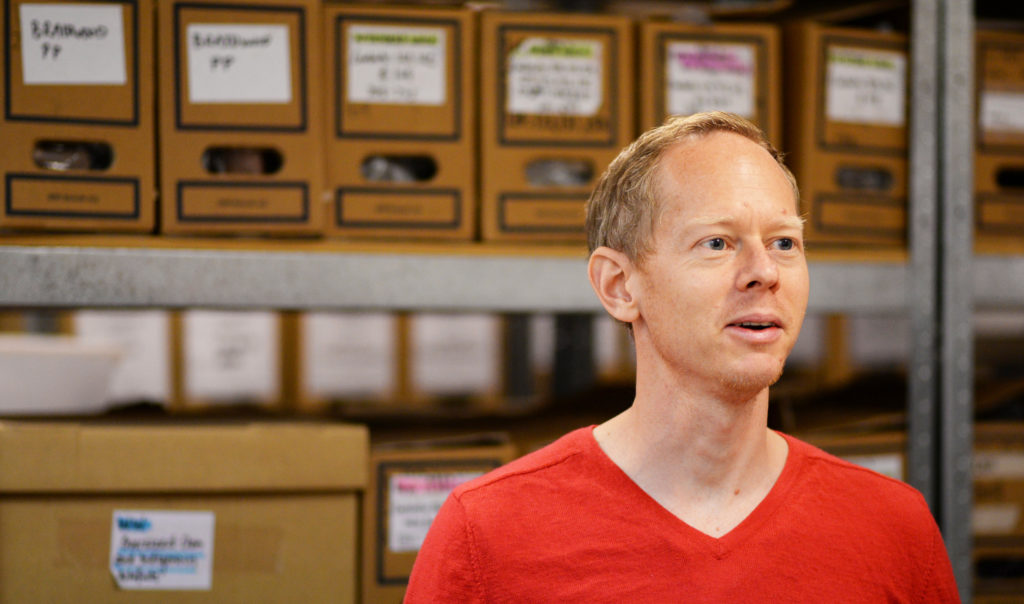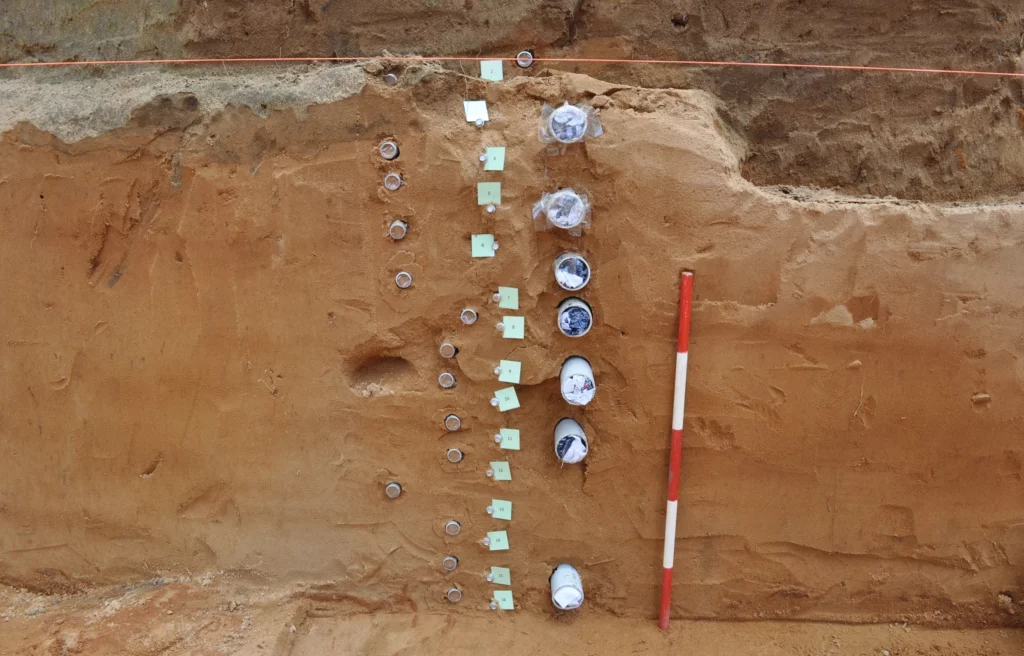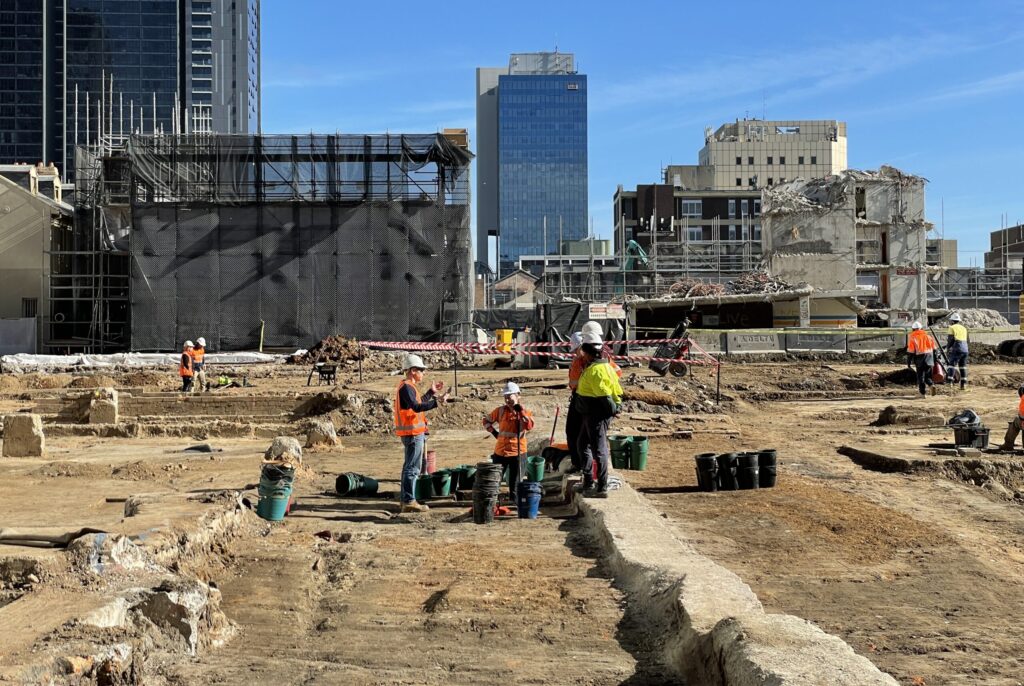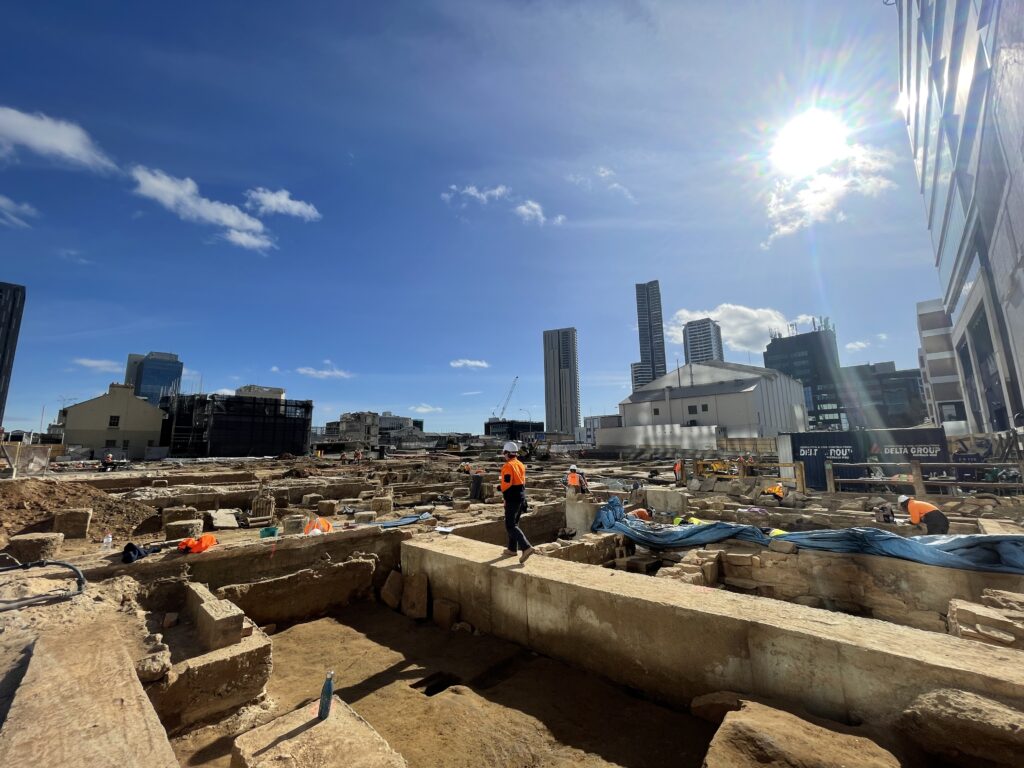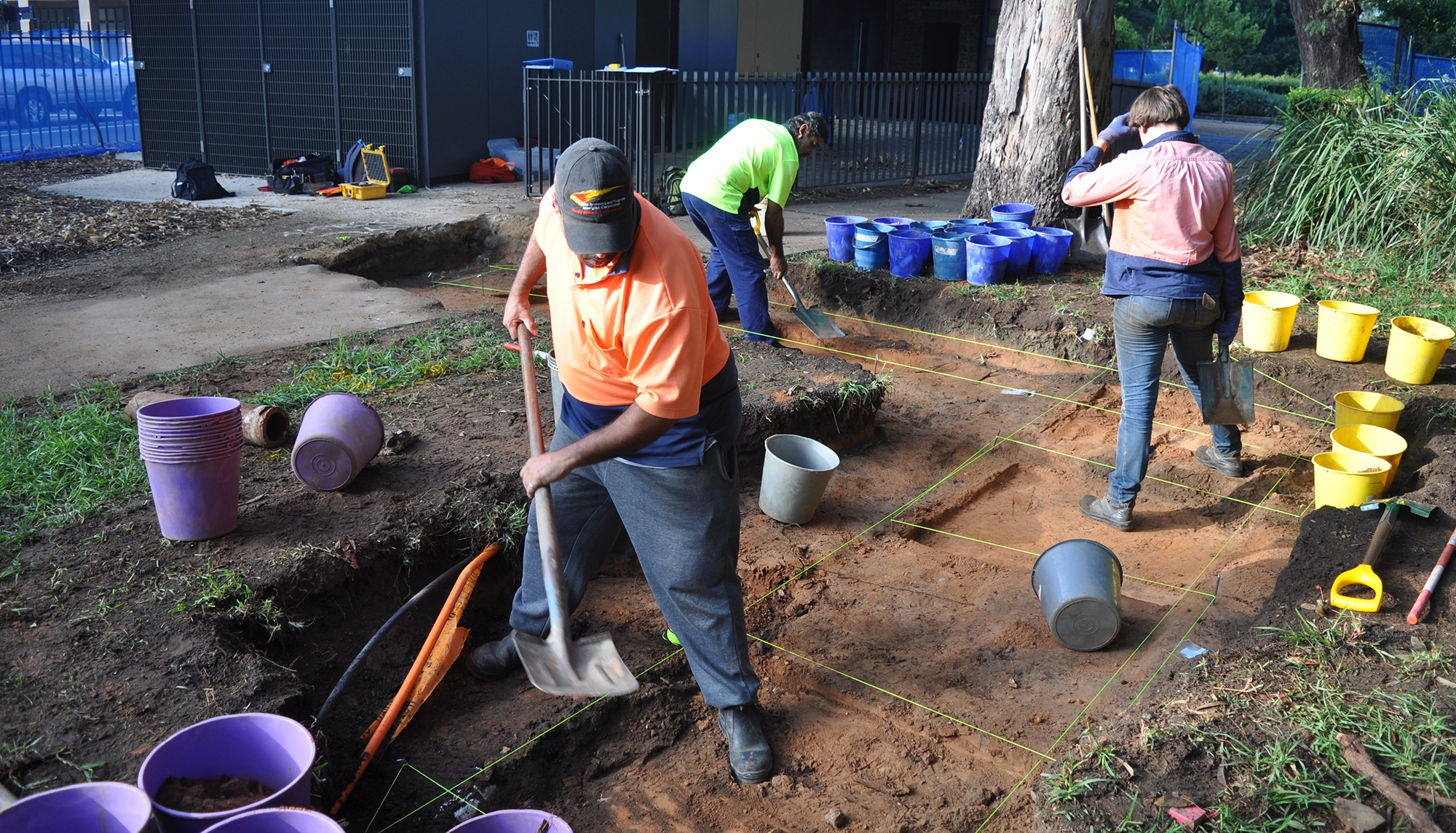
Early ochre use by First Nations
A new paper presents fresh evidence about the history of ochre use and human occupation in the Sydney Basin.
GML Principal Dr Tim Owen has co-authored, with a team from Flinders University (SA) and Gloucester University (UK), the paper: ‘First Nations pre-LGM ochre processing in Parramatta, NSW, Australia’, published this week in Archaeology in Oceania. The paper presents new evidence about the history of ochre use and human occupation in the Sydney Basin.
Before this discovery, it was thought that ochre was first used in the Sydney Basin around 9,000 years ago, and that the Parramatta region may not have been inhabited by First Nations peoples before 14,000 years ago. However, the new evidence places both events before the Last Glacial Maximum (LGM), over 20,000 years ago.
During archaeological excavations in the Gardens Precinct of Old Government House for Parramatta Park Trust, multiple ochre fragments were uncovered at the George Street Gatehouse. This area is within the Parramatta Sand Body (PSB), an ancient sedimentary sand deposit bordering parts of Parramatta River. It holds significant Aboriginal archaeological and geomorphological heritage values and is listed on the NSW State Heritage Register.
The ochre fragments, show evidence of processing through grinding by First Nations people, and were dated between 35,000 and 30,000 years ago. This discovery is the oldest proof of ochre processing in the Sydney Basin. It indicates that the Parramatta River may have been a route for people moving through and living in the now submerged Pleistocene coastal area. It also suggests that these people used ochre for symbolic purposes.
This research significantly adds to our knowledge of ochre use, and the timeline of Aboriginal occupation near the Parramatta River.
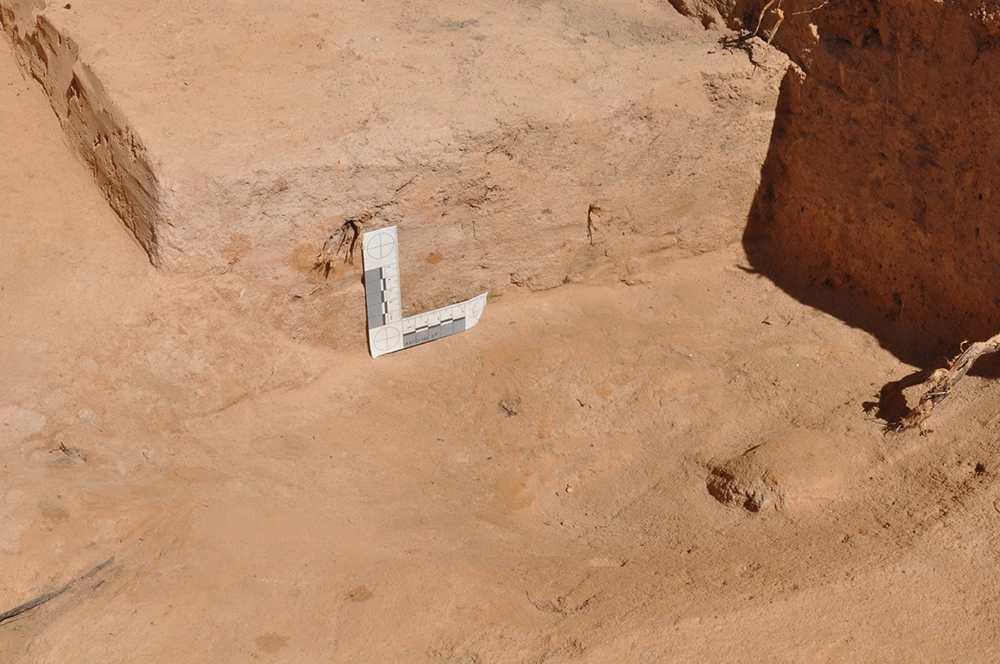
The ochre pit.
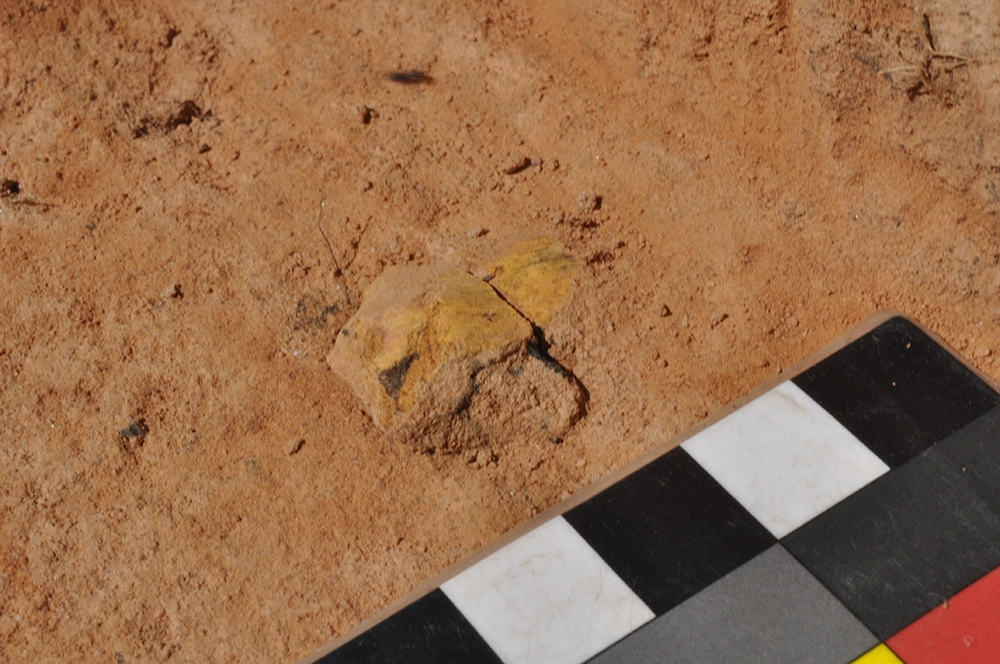
Ochre up close in the pit.
